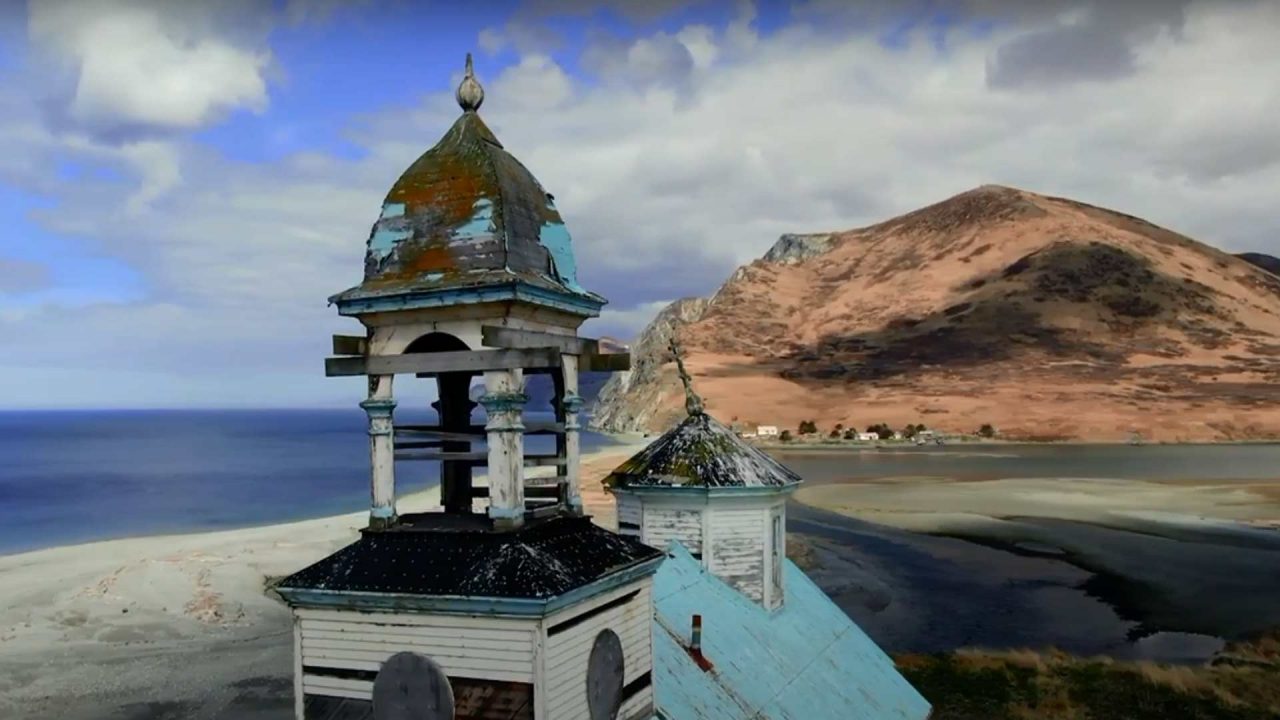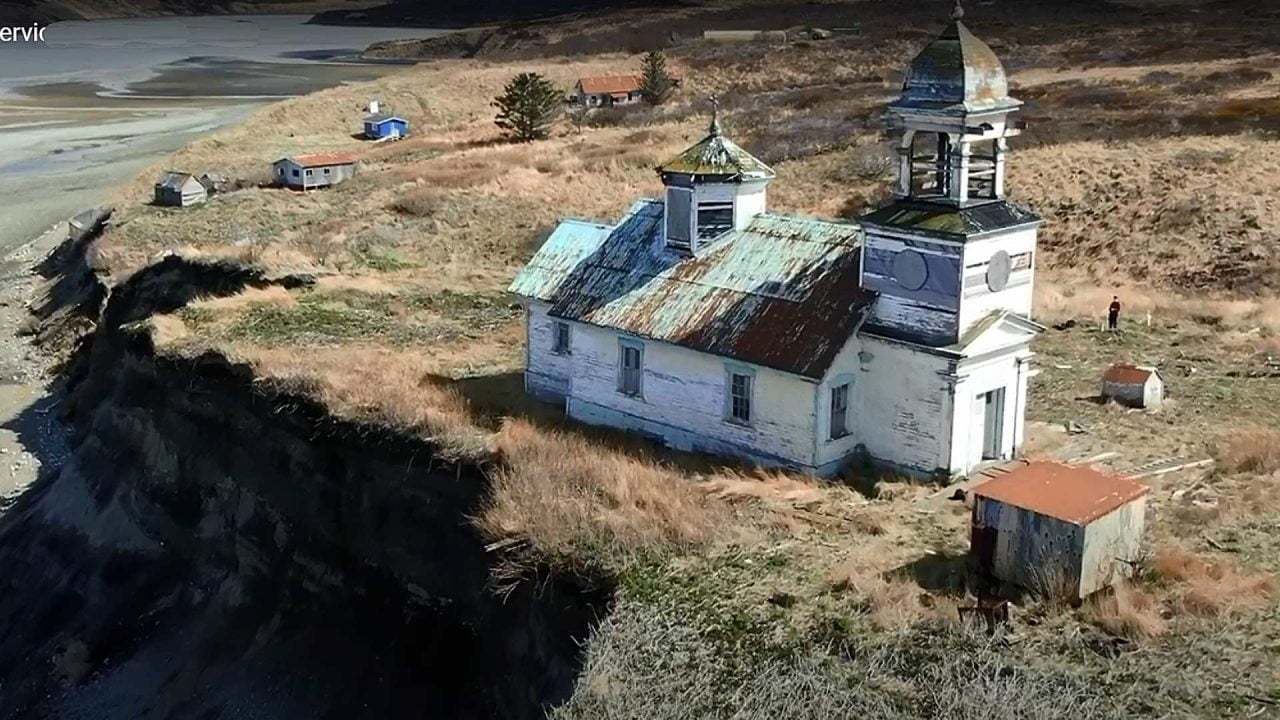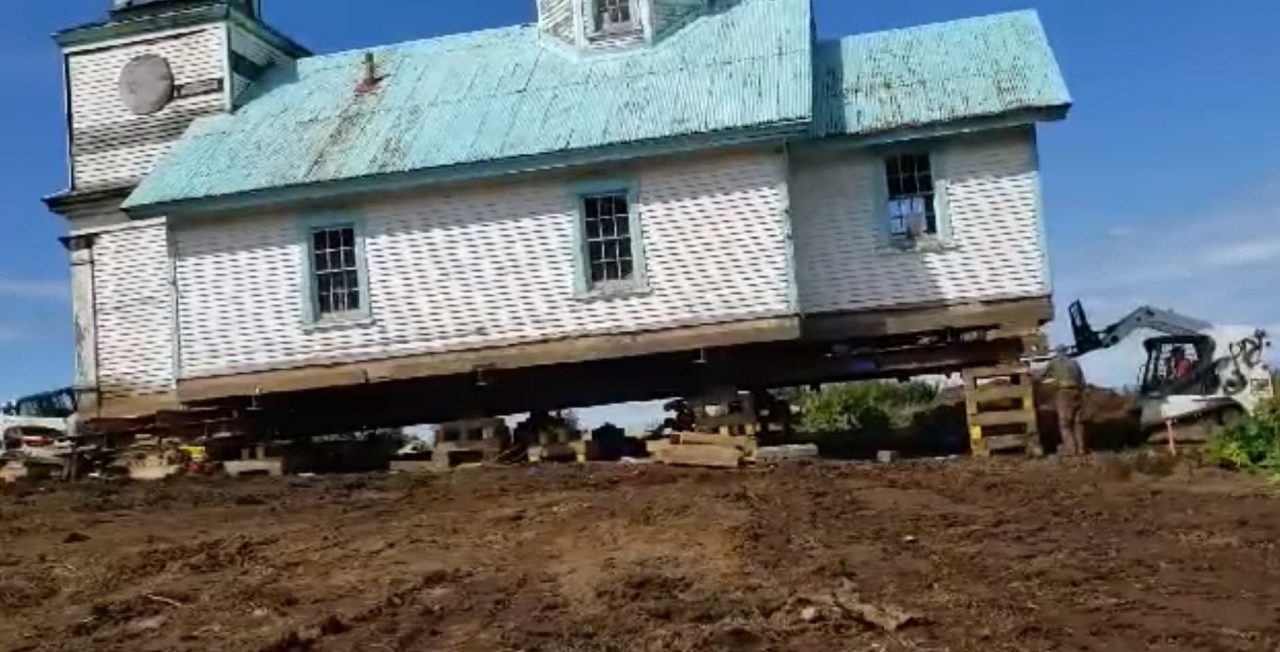
One Alaska’s oldest churches, and a spiritual treasure to Orthodox Alaska Natives, has been saved from the precarious perch where it sat just 20 feet from an eroding cliff.
The Ascension of Our Lord Chapel located near the remote Village of Karluk on Kodiak Island was built in 1888 by the Russian Orthodox. For years it has been in danger of being destroyed due to erosion from a river which is undercutting a bluff.
On Aug. 6, however, the nationally recognized church was carefully moved about 80 feet from the bluff, where it will remain on steel beams until it can be moved to a permanent site. The effort to save the building was carried out by a group of historic preservationists, working together with locals and Orthodox Church officials.
Russian Orthodox Sacred Sites in Alaska (ROSSIA) is the group that spearheaded effort. They work to preserve historic Orthodox churches across the state.

The Ascension of Our Lord has long stood as a connection to the spiritual and cultural history of the village.
The late Archbishop David Mahaffey, who oversaw about 90 Orthodox parishes across Alaska until his death late last year, told the Watchman in 2020 that the church is more than just a historic landmark.
“It is probably the best example we have – and certainly the oldest existent church – of Russian style architecture,” he said. “When we had a conversation about how to save the church, some of the people were weeping.”
Karluk village is located about 75 miles from the City of Kodiak where Russian Orthodox missionaries first brought Christianity to Alaska in the 1700s. Karluk was once a thriving community with a large cannery. Today the population has shrunk to less than 50.
When Russians first sailed to Alaska in late 1700 it was mainly for fur trade, but the vessels also contained Orthodox missionaries. These men shared the Gospel with area Natives, baptizing and marrying them, as well as helping to build houses of worship.
ALASKA WATCHMAN DIRECT TO YOUR INBOX
The Orthodox brought the Gospel in a manner that strove to honor local Native traditions and customs. By taking this approach, missionaries helped Native Alaskans graft the Christian faith into their ancient way of life. They learned the Native language, gave them a written alphabet and translated the Gospel into their languages so that they learned the faith in a uniquely Native way. Because of this, the Orthodox prayer life has become second nature in many Alaska villages.
Generations have been baptized, married and buried in and around the old church. Saving the building, however, required a joint effort. A group that includes ROSSIA, the Alaska Association of Historical Preservation, Bureau of Indian Affairs, the National Parks Service and the Karluk Village all raced against time to raise money and resources to move the church.









4 Comments
Thank you God
For your word the Bible
I worked in the Karluk village in 1983, excavating pre-contact archaeological site. Then, this little church was in a decent shape on the top of the hill. In the 1970s, Karluk village was nearly destroyed by a devastating storm and the entire village was relocated to another location nearby. This Russian Orthodox Church must be preserved as a historic site.
Way to go ROSSIA
…..oh and Alaska Association of Historical Preservation, Bureau of Indian Affairs, the National Parks Service and the Karluk Village, way to go to all of them.